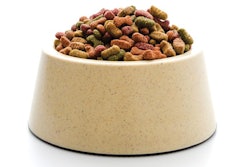
Could it be there is a human food trend not yet tapped by the pet food industry?
The time of day when humans eat specific foods influences how their bodies react to that food. As a general example, many nutritionists recommend eating more earlier in the day to improve physical performance and minimize weight gain. No more midnight cold pizza. In “What to Eat When” by Michael Rozien, M.D. and Michael Crupain, M.D., the two doctors review evidence that timing food choices influences various aspects of human health. They also provide numerous recommendations for when to eat and which types of food to eat under various conditions. These range from feeling grief, stress and fatigue to when one is tested or needs to make an important decision. Likewise, the doctors delineated daytime-dependent diets for people at risk for cancer, heart disease and other disorders. They call their method the When Way, though I’ve seen similar systems referred to as the circadian rhythm diet. The circadian rhythm includes physical and behavioral changes following a daily cycle related to light and dark periods.
Unlike most human food trends, the pet food industry doesn’t seem to have absorbed the circadian rhythm diet yet. After searching Chewy and Amazon, I found only one product line marketed towards pets based on time of day, Milk-Bone Good Morning Healthy Joints Daily Vitamin Dog Treats.
The development of more time-specific pet products could follow a familiar path. People once fed their pets table scraps and didn’t think about its effects on pet health. Pet owners moved to specifically formulated pet diets, then on to premium and superpremium foods, always focused on improving their pets’ health. Likewise, pet owners now feed their pets the same foods morning and night, often day after day. People increasingly want to feed their pets like themselves, and we eat different things at different times of day regardless of if we use the circadian rhythm method or not. Perhaps the concept of feeding pets different foods at different times of the day may inspire new product development. Those diets could reflect human cultural ideas about breakfast foods, although Rozien and Crupain do warn against stereotyping foods such as eggs or salmon as breakfast or dinner foods. Still, egg protein might be a good choice for a diet marketed to break Fido’s fast. Circadian pet foods could incorporate functional ingredients designed for that type of day. Likewise, they could be formulated as therapeutic diets, similar to the When Way diets described for people at risk of disease.
Currently, livestock feed producers formulate specific products meant to deliver the right nutrition at the right time, reported Feed Strategy, part of a concept called precision feeding. If the feed industry can do it, why not pet food?
Lack of research on circadian rhythm pet foods
Unfortunately, a great big hole opened in my idea for circadian pet foods as I reviewed scientific journals. Very few scientists have published research on the influence of circadian rhythm on metabolism in dogs, cats and other animals commonly kept as pets. A 2008 study in Comparative Medicine documented daily rhythms in serum lipid levels in healthy dogs, while examining the influence of environmental variables such as lighting and feeding conditions on these levels. In 1993, Applied Animal Behaviour Science published research on dog’s sleep cycles, but the researchers didn’t examine metabolism. Surely, I missed some studies on dog and cat circadian rhythms, but the research seems scarce nonetheless.
To formulate nutritious circadian rhythm pet foods, it seems like pet food companies will need to either do in house research or partner with academics. That said, a lack of empirical evidence supporting a diet trend hasn’t always been an impermeable barrier to new pet (or human) food product development.

















